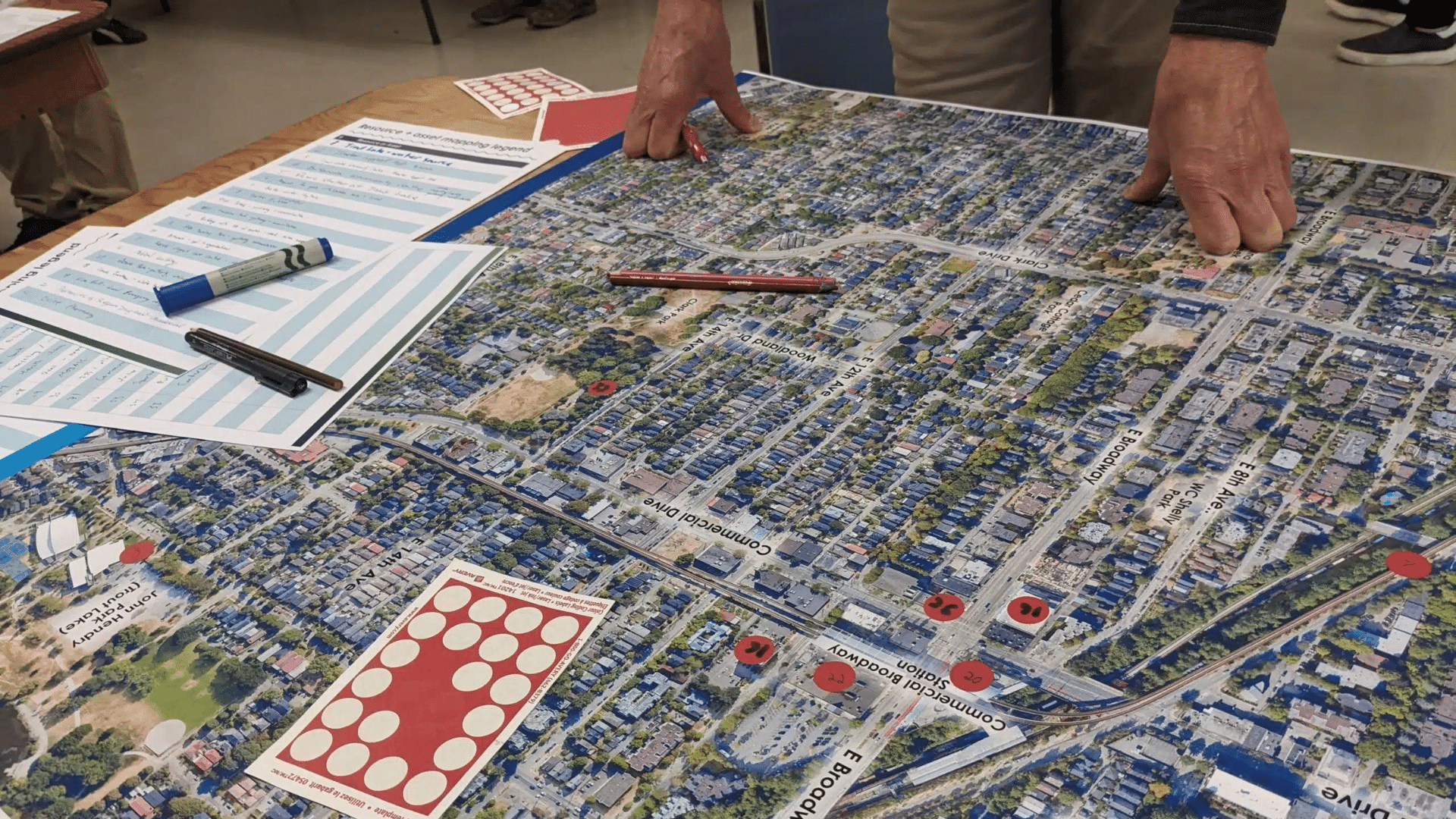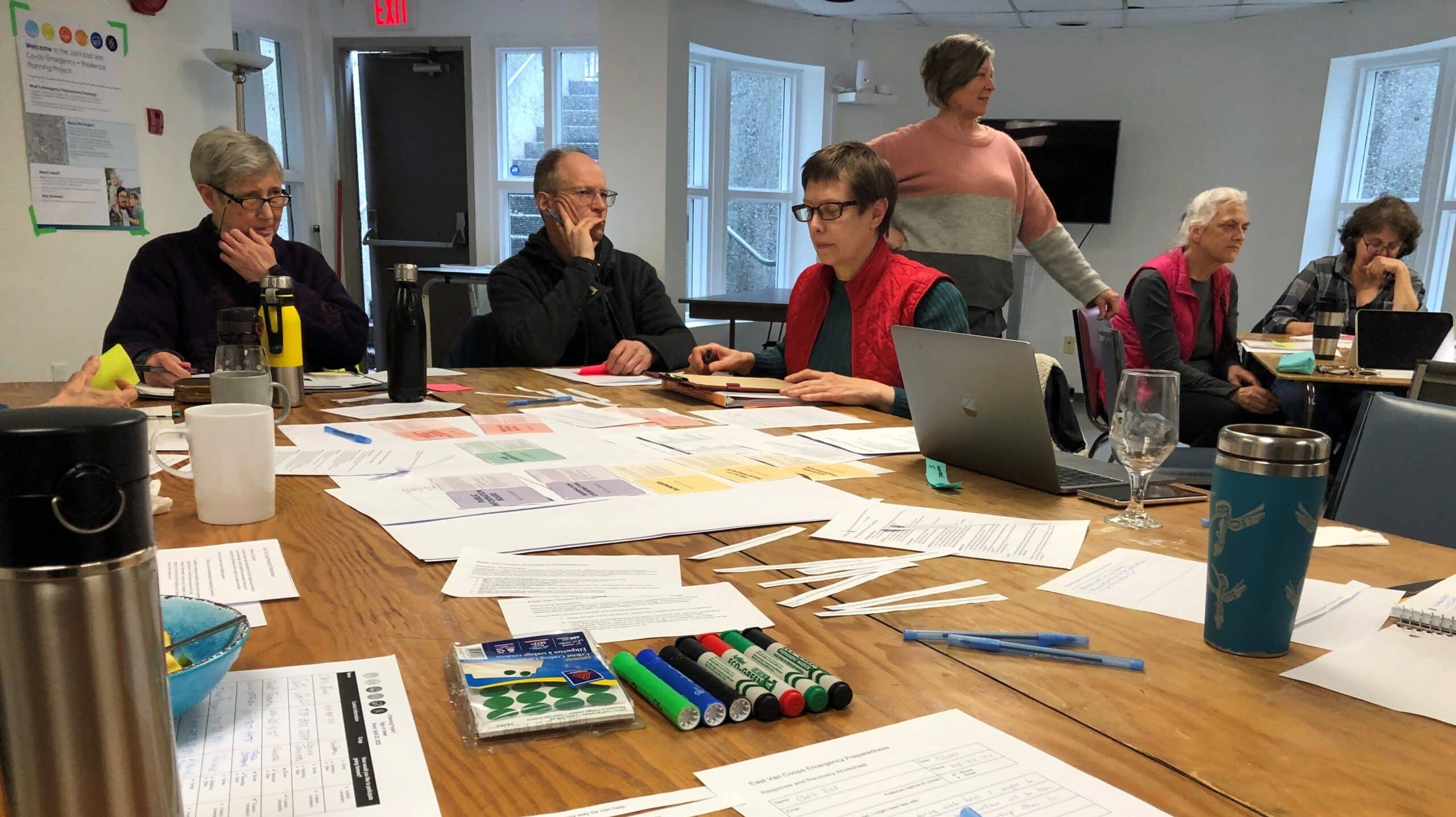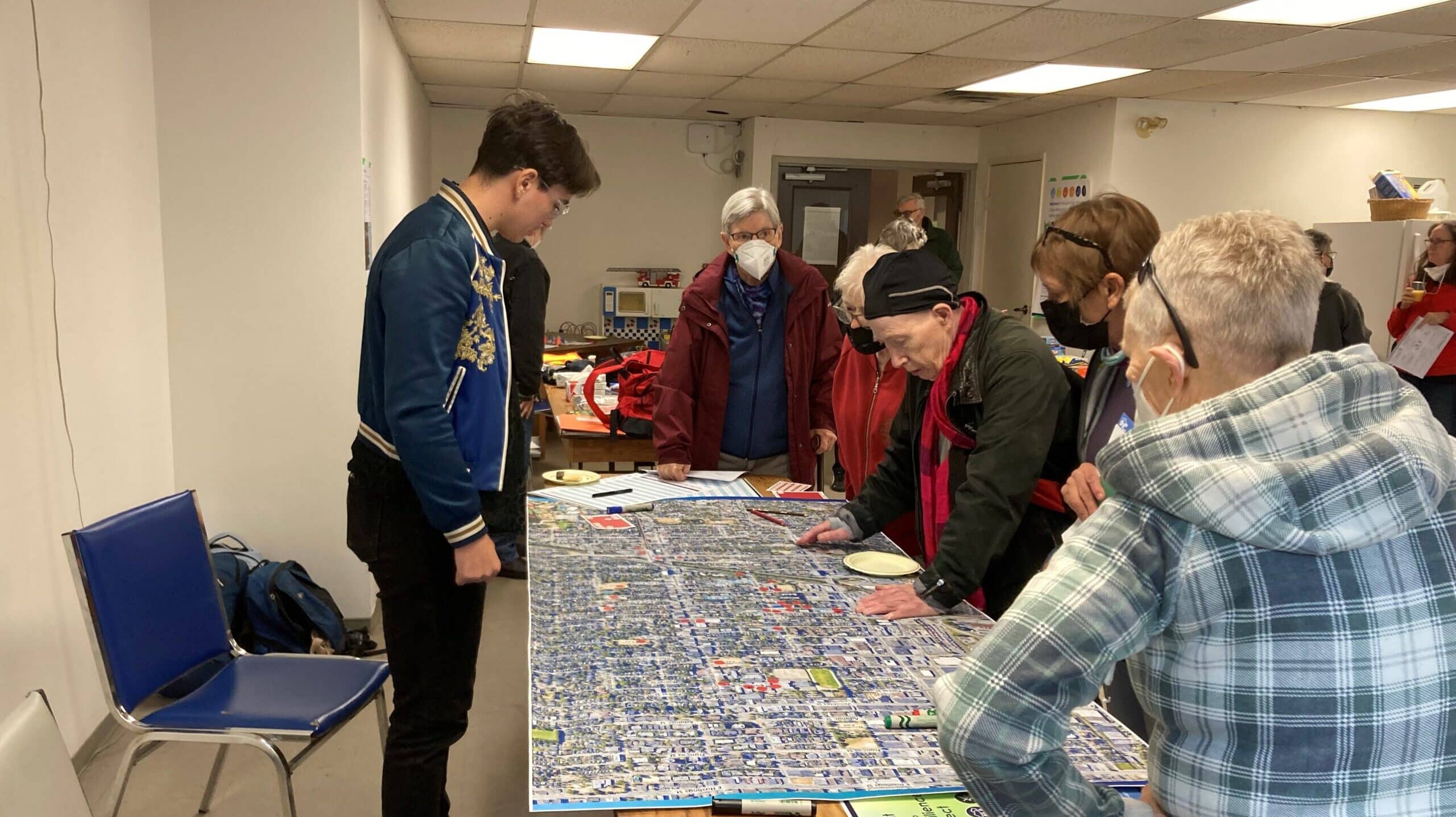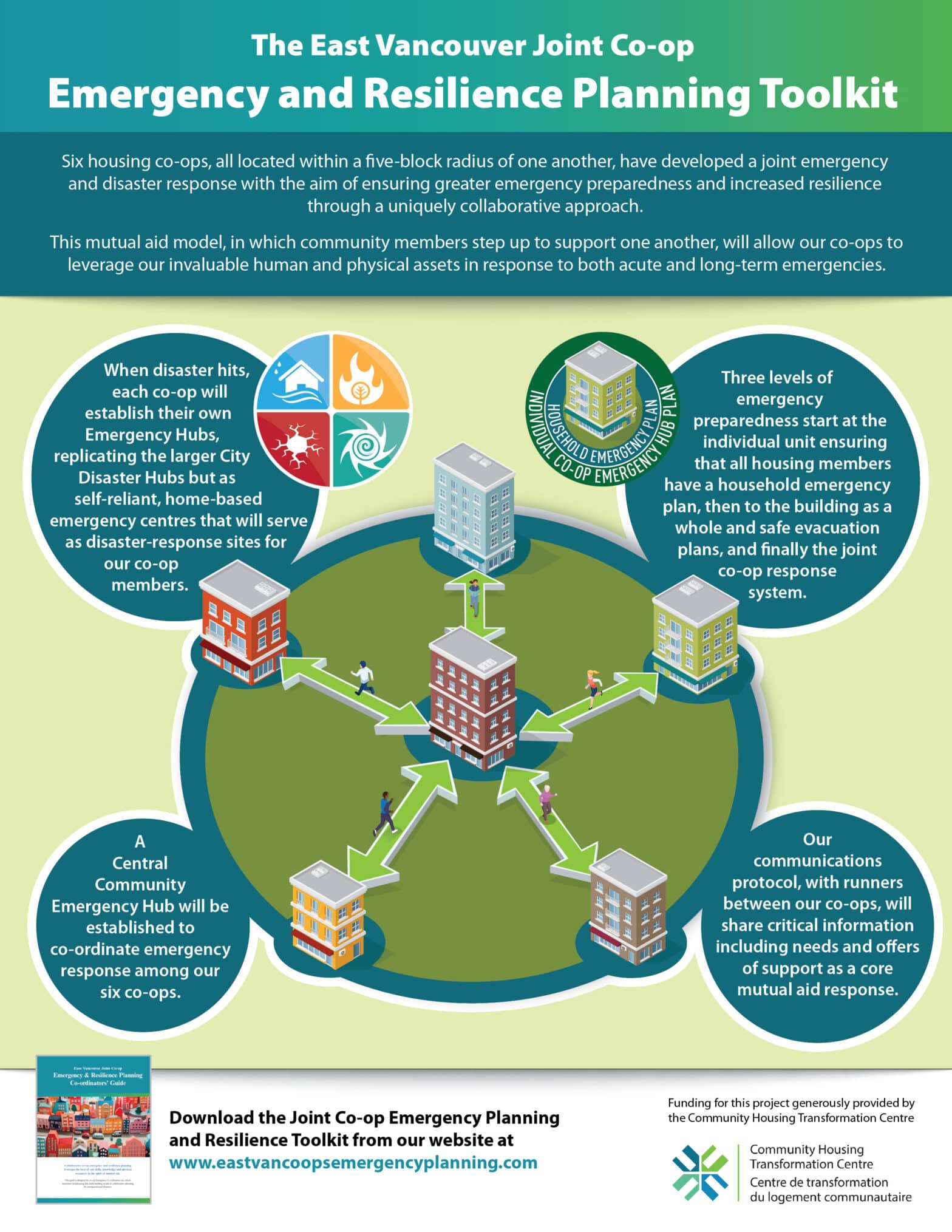Co-op Collaboration: Innovative Emergency Planning in East Vancouver

“There’s a lot of strengths and assets—a lot of opportunity in co-ops. Co-ops are already well-organized. We have strong relationships, and our common rooms that could replicate city disaster hubs—but in a very place-based, at-home kind of way.”
A group of co-ops in Vancouver have taken that planning to a whole new level, baking the “co-operation among co-operatives” principle into the process to ensure their members are prepared not only at the individual level but that the co-ops can also provide support and mutual aid within their network.
The six co-ops – Paloma, Laura Jamieson, Sitka, Rising Star, Sunrise and Westerdale – joined forces to create the East Vancouver Joint Co-op Emergency and Resilience Planning Project, publishing the results of several years of hard work on their website earlier this year to serve as a template for other co-ops to build their own plans.
“We have these six co-ops within a five-block radius and to me that was a tremendous amount of capacity within very close proximity, which makes supporting each other much more doable from a logistical angle,” said Ian Marcuse, a Paloma Housing Co-op member who spearheaded the multi-year project.
“There’s a lot of strengths and assets, a lot of opportunity in co-ops. Co-ops are already well-organized, we have these strong relationships, and we have these common rooms…that could replicate city disaster hubs but in a very place-based, at-home kind of way.”

The idea for a joint emergency plan started with a City of Vancouver pilot project to do emergency planning in three neighbourhoods, including Grandview-Woodlands, where the co-ops are located, about eight years ago. Marcuse was involved through his work on food security at the Britannia Community Centre and found discussions about emergency planning connected with his interests in community building, climate change, resilience and mutual aid.
“There were two pieces that clicked in my head,” Marcuse recalled. Supporting vulnerable residents in the aftermath of an earthquake means planning at a “hyper-local level” because getting an elderly person using a wheelchair or walker to a support hub 10 blocks away will be a challenge.
“But if you can get that person to support in five blocks, or a five-minute walk, that’s going to decrease the barriers,” he added.

The second concern is the likelihood that emergency disaster hubs will be overwhelmed, with supports unavailable for at least a few days – and rebuilding housing could take months, if not years.
“I had this idea that rather than us being dependent on government or emergency services that could be overwhelmed, maybe we could put in place our own systems and supports – this mutual aid idea – just among our six co-ops,” Marcuse said.
Representatives from each co-op met to discuss emergency planning at the individual, building, and inter-co-op levels, and what supports would be needed for all members, including families, people with disabilities or mobility challenges, language barriers, and seniors.
“Here’s the amazing thing – nothing on the internet speaks to collaborative multi-building response,” Marcuse said. “There’s a ton of stuff for building managers or stratas like evacuation plans for residents…but we’re building neighbourhood resilience.”
The co-op boards approved a memorandum of understanding – they would strive to create a neighbourhood support system to help all members prepare for adverse events, and to support each other after a natural disaster or other emergency – and a grant from the Community Housing Transformation Centre helped the group develop the toolkit and resources.


Meeting every other month, the group shared ideas about what their collaborative support system could look like in an emergency, whether it was responding to a massive earthquake or grappling with a heat dome:
- Individual household: ensuring everyone had their own emergency plan, stored water in their unit, a stocked grab-and-go kit, pet plan, etc.
- Building: how members will evacuate, what to do in an earthquake, establishing a muster station
- Joint collaborative plan: volunteer emergency coordinators use the guide to set up emergency centres in each co-op’s common room, communicating needs and offers of help to other co-ops from there
Each of the resources is available on the group’s website as a template that can be downloaded and adjusted to suit the specific needs of other co-ops.
Lindsey Murphy, Co-op Services Coordinator with the Co-operative Housing Federation of BC, said the group’s work is a significant benefit for the entire sector.
“Doing something is always better than doing nothing,” Murphy said, but creating an inter-co-op plan of this magnitude can be a daunting task. “This provides a starting off point, so co-ops can look at what they might want to consider and take things step by step.
“It’s great because they’ve put a lot of work into it – they really thought of every scenario. And it’s great to see that co-operation among co-operatives.”


While the bulk of the work is behind them, the group’s work isn’t quite finished. Marcuse said they hope to develop an annual scenario modeling so that the emergency coordinators can run through an emergency and expand the network beyond their co-ops.
“We’re all keen to share this with other people,” Marcuse said, “and build ‘resilience relations’ with our non-co-op neighbours as we fine-tune our plans.”

For more information, visit eastvancoopsemergencyplanning.com or email eastvancoopsemergencyplanning@gmail.com.